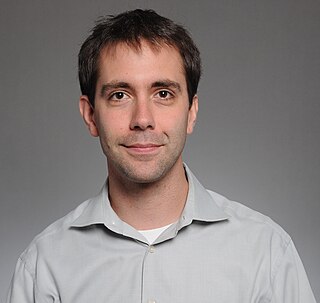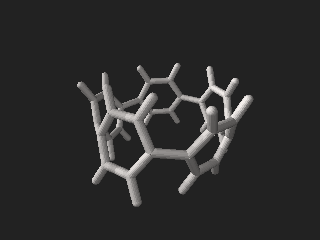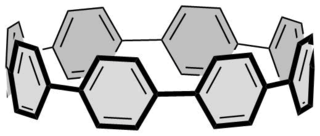
Carolyn Ruth Bertozzi is an American chemist and Nobel laureate, known for her wide-ranging work spanning both chemistry and biology. She coined the term "bioorthogonal chemistry" for chemical reactions compatible with living systems. Her recent efforts include synthesis of chemical tools to study cell surface sugars called glycans and how they affect diseases such as cancer, inflammation, and viral infections like COVID-19. At Stanford University, she holds the Anne T. and Robert M. Bass Professorship in the School of Humanities and Sciences. Bertozzi is also an Investigator at the Howard Hughes Medical Institute (HHMI) and is the former director of the Molecular Foundry, a nanoscience research center at Lawrence Berkeley National Laboratory.

Morten Peter Meldal is a Danish chemist and Nobel laureate. He is a professor of chemistry at the University of Copenhagen in Copenhagen, Denmark. He is best known for developing the CuAAC-click reaction, concurrently with but independent of Valery V. Fokin and K. Barry Sharpless.
The term bioorthogonal chemistry refers to any chemical reaction that can occur inside of living systems without interfering with native biochemical processes. The term was coined by Carolyn R. Bertozzi in 2003. Since its introduction, the concept of the bioorthogonal reaction has enabled the study of biomolecules such as glycans, proteins, and lipids in real time in living systems without cellular toxicity. A number of chemical ligation strategies have been developed that fulfill the requirements of bioorthogonality, including the 1,3-dipolar cycloaddition between azides and cyclooctynes, between nitrones and cyclooctynes, oxime/hydrazone formation from aldehydes and ketones, the tetrazine ligation, the isocyanide-based click reaction, and most recently, the quadricyclane ligation.

Brian M. Stoltz is currently a professor of chemistry at the California Institute of Technology. The primary focus of his research is chemical synthesis with an emphasis on expanding the scope of allylic alkylation for the preparation of complex molecules possessing unique structural, biological, and physical properties. His research involves the total synthesis of natural products such as dragmacidin F and (–)-cyanthiwigin F, and development of synthetic reactions to access quaternary stereocenters. Specifically, he has focused on the allylic alkylation of enolates, developing an enantioselective variant in 2004.

Jacob M. Hooker is an American chemist and expert in molecular imaging, particularly in the development and application of simultaneous MRI and PET. He is a Professor of Radiology specializing in Autism Research, Phyllis and Jerome Lyle Rappaport MGH Research Scholar and scientific director at the Lurie Center for Autism at Massachusetts General Hospital.

Cynthia J. Burrows is an American chemist, currently a distinguished professor in the department of chemistry at the University of Utah, where she is also the Thatcher Presidential Endowed Chair of Biological Chemistry. Burrows was the Senior Editor of the Journal of Organic Chemistry (2001-2013) and became Editor-in-Chief of Accounts of Chemical Research in 2014.,,
Tehshik Peter Yoon is a Canadian-born chemist who studies the new reaction methods for organic synthesis with the use of catalysis. Yoon currently is a professor at the University of Wisconsin–Madison in the chemistry department. For his contributions to science, he has received numerous awards including the Beckman Young Investigator Award and National Science Foundation CAREER Award.

A cycloparaphenylene is a molecule that consists of several benzene rings connected by covalent bonds in the para positions to form a hoop- or necklace-like structure. Its chemical formula is [C6H4]n or C
6nH
4n Such a molecule is usually denoted [n]CPP where n is the number of benzene rings.
Sarah Elizabeth Reisman is the Bren Professor of Chemistry and the Chair of Division of Chemistry and Chemical Engineering at California Institute of Technology. She received the (2013) Arthur C. Cope Scholar Award and the (2014) Tetrahedron Young Investigator Award for Organic Synthesis. Her research focuses on the total synthesis of complex natural products and data-driven developments of asymmetric catalysis.
Corinna S. Schindler is a Professor of Chemistry at the University of Michigan. She develops catalytic reactions with environmentally benign metals such as iron, towards the synthesis of biologically active small molecules. For her research in the development of new catalysts, Schindler has been honored with several early-career researcher awards including the David and Lucile Packard Foundation Fellowship in 2016, the Alfred P. Sloan Fellowship in 2017, and being named a member of the C&EN Talented 12 in 2017. Schindler has served on the Editorial Board of Organic and Bimolecular Chemistry since 2018.
Bradley Lether Pentelute is currently a professor of chemistry at the Massachusetts Institute of Technology (MIT). His research program lies at the intersection of chemistry and biology and develops bioconjugation strategies, cytosolic delivery platforms, and rapid flow synthesis technologies to optimize the production, achieve site-specific modification, enhance stability, and modulate function of a variety of bioactive agents. His laboratory successfully modified proteins via cysteine-containing “pi-clamps” made up of a short sequence of amino acids, and delivered large biomolecules, such as various proteins and drugs, into cells via the anthrax delivery vehicle. Pentelute has also made several key contributions to automated synthesis technologies in flow. These advances includes the invention of the world's fastest polypeptide synthesizer. This system is able to form amide bonds at a more efficient rate than standard commercial equipment and has helped in the process of understanding protein folding and its mechanisms. This automated flow technology was recently used to achieve total chemical synthesis of protein chains up to 164 amino acids in length that retained the structure and function of native variants obtained by recombinant expression. The primary goal of his endeavor is to use these processes to create designer biologics that can be used to treat diseases and solve the manufacturing problem for on-demand personalized therapies, such as cancer vaccines.

Michael J. Krische is an American chemist and Robert A. Welch Chair in Science at the Department of Chemistry, University of Texas at Austin. Krische has pioneered a broad, new family of catalytic C-C bond formations that occur through the addition or redistribution of hydrogen. These processes merge the characteristics of catalytic hydrogenation and carbonyl addition, contributing to a departure from the use of stoichiometric organometallic reagents in chemical synthesis.

Carbon nanohoops are a class of molecules consisting of aromatic sections curved out of planarity by the inherent cyclic geometry of the molecule. This class of molecules came into existence with the synthesis of cycloparaphenylenes by Ramesh Jasti in the lab of Carolyn Bertozzi and since then has been expanded into cyclonaphthylenes, cyclochrysenylenes, and even cyclohexabenzocoronenylenes. Moreover, several nanohoops containing such antiaromatic units as dibenzo[a,e]pentalene and pyrrolo[3,2-b]pyrrole are reported. Carbon nanohoops often map on to a certain chirality of carbon nanotube. If the diameter is adequate, these molecules can host a fullerene. For example, [10]cycloparaphenylene can host a C60 fullerene.
Ellen Sletten is an American chemist who is the John McTague Career Development Chair at University of California, Los Angeles. Her research considers the use of physical organic chemistry for diagnostics and medical therapies.
Thomas Lectka is an American organic chemist, academic and researcher. He is Jean and Norman Scowe Professor of Chemistry and leads the Lectka Group at Johns Hopkins University.
Karsten Meyer is a German inorganic chemist and Chair of Inorganic and General Chemistry at the Friedrich-Alexander University of Erlangen-Nürnberg (FAU). His research involves the coordination chemistry of transition metals as well as uranium coordination chemistry, small molecule activation with these coordination complexes, and the synthesis of new chelating ligands. He is the 2017 recipient of the Elhuyar-Goldschmidt Award of the Spanish Royal Society of Chemistry, the Ludwig-Mond Award of the Royal Society of Chemistry, and the L.A. Chugaev Commemorative Medal of the Russian Academy of Sciences, among other awards. He also serves as an Associate Editor of the journal Organometallics since 2014.
Rebekka Klausen is an American chemist who is the Second Decade Society Associate Professor at Johns Hopkins University. Her research considers carbon and silicon-based nanomaterials for optoelectronic devices. She was a finalist for the 2021 Blavatnik Awards for Young Scientists.
Jennifer Ann Prescher is an American chemist who is a professor of chemistry at the University of California, Irvine. Her research considers the development of bioorthogonal, bioluminescent tools for the noninvasive, real-time imaging of immunometabolism. She was recognized with the 2023 American Chemical Society Arthur C. Cope Scholar Award.
Hosea Nelson is an American chemist who is a professor at California Institute of Technology. His research investigates the design and total synthesis of complex molecules. He was a finalist for the 2021 Blavatnik Awards for Young Scientists.

Neal K. Devaraj is an American chemist and professor at the University of California, San Diego (UCSD). His research interests include artificial cells, lipid membranes, and bioconjugation.








